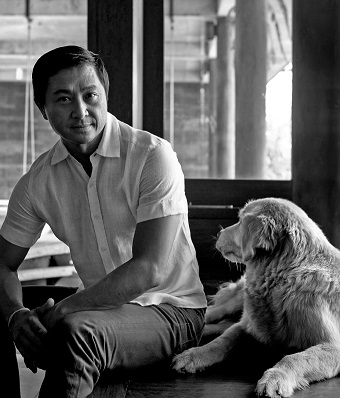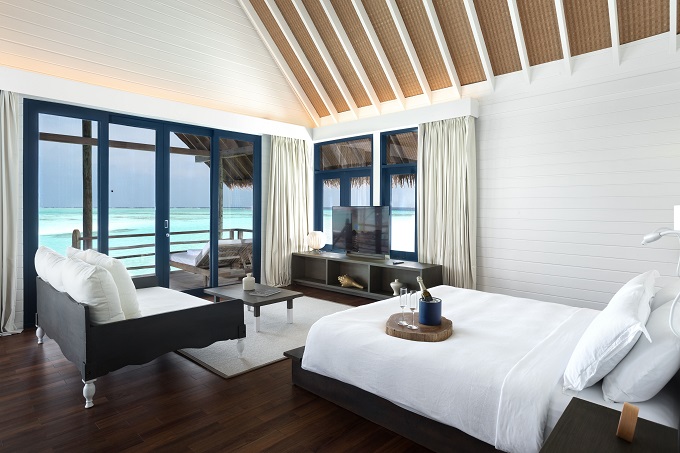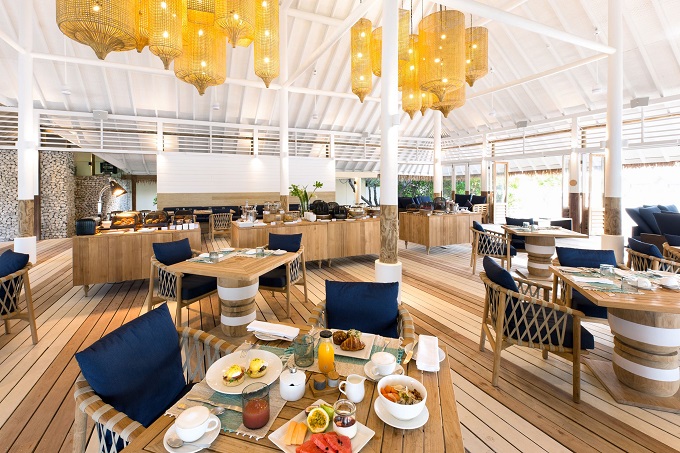When COMO founder, Christina Ong wanted a home created she turned to Architect Yew Kuan Cheong, one of the world’s great design visionaries. No surprise then that Yew has been behind some of COMO’s most beautiful properties. He is the visionary behind the natural aesthetic of many of the COMO’s resorts, including COMO Cocoa Island in the Maldives, COMO Uma Paro in Bhutan and COMO Uma Ubud in Bali – an island he calls home. His elegant, sympathetic style creates a seamless connection with the outside world, building homes that flow harmoniously with nature. Cheong began working as an architect in Singapore in 1990, with Kerry Hill Architects, before founding his own design firm, AreaDesigns, in the mid 90s. His work with COMO first started over 20 years ago, when he designed parts of COMO Parrot Cay – the private island resort in the Turks and Caicos. Since then, he has created homes for the likes of Donna Karan as well as Christina Ong.
|  |
What is nature to you? I live by the edge of a river gorge in Ubud. I’ve been there for over 20 years. Nature is a way of life. In Bali there is a strong animistic belief that natural objects have some kind of spiritual essence – a lifeform of its own. When you are immersed in that way of thinking you can't help but form a deep respect for it.
When people stay in one of your homes, how do you want them to feel?
Embraced, at ease, and hopefully inspired. .jpeg)
|
How would you define modern day luxury?
Luxury is simplicity. It is simple things made special though ritual. In the early days of building what is now COMO Shambhala Estate, we stayed in a hut and had to make hot water over an open fire. What was necessary then because there was no other way to do it is a luxury now, because we’ve forgotten how to do it. The slow boil, the smell of smoke, the pleasure of the hot water on cold nights – it was visceral and memorable. And at night, when we had only one light bulb, watching fireflies flicker was a constant source of delight.
Do you think man can control nature?
Man already controls nature – too much and to our detriment. We should work with nature; not overwhelm it. Elements of wind, light and water can be intelligently brought into beneficial relationships with our buildings, rather than blocking or banishing them. But now technology is everything. Man got so clever he became stupid, using machines to overcome nature, consume energy and waste resources. Instead of lovely breezes, we live with chilled air from frozen grilles.
How do you bring out culture in your work?
It starts with understanding what makes a place special. Every location – especially the ones I've worked in – are tradition-rich and culturally dense, each one requiring a different and unique response. In Bali, for example, celestial orientations are critical, with Mt Agung the sacred centre. We would position the shrine and most important rooms towards the mountain. The planning is very specific and unique to Bali. For other locations around the world, if we respect the source culture, new forms can evolve – blending modern and traditional, local and international – while still remaining true to its place.
Tell us about an element of Balinese design that interests you.
It’s not so much the case now, but before – when there were no architects – it used to be the local priests in Bali who would help design buildings. They’d take a wooden stick and measure the homeowner: the width of their knuckle, the length of their forearm, their finger size and so on. They would then use this stick to proportion the person’s home – like bespoke couture, except the garment is a house. It’s a bit archaic nowadays and a lost art, but very interesting and illustrates how respect for the human body is a constant consideration when designing and building.  |
Is there more to architecture than designing buildings?
Definitely. Buildings are containers for life, and we often forget how basic that is. The act of living encompasses all things human – our emotions, our problems, our hopes and dreams, so we need to be sensitive to that and create structures that enhance these emotions rather than diminish. If we treat our environment like we treat our bodies, the world would be a better place.
People often say nature is the greatest designer. What has it taught you?
It's still teaching me, all the time. Besides the tangible aspects of nature that we know and appreciate, I've become fascinated with energy in nature – especially the priests who work with such energy. They are land whisperers who are able to read the aura of a land and its messages for our relationship with it. Such intuition and acute sensitivity to the environment can guide our thinking, which falls completely in sync with the ethos and spirituality of the wellness resorts we build.
Can you tell us about a place that means something to you, and why?
There are many places I love but one I would like to go back to is Havasu Canyon, a little canyon off the Grand Canyon, which is only accessible by raft or foot. It was like walking into Eden: turquoise pools, pulsating waterfalls, bright green trees, little caves. Man used to live there once – their handprints are still on the cave walls. It's a home that nature built.  |
Would you choose light over darkness?
Yes and no. Nothing matches the ethereal way sunlight streams through a window – how it hits a certain spot and creates beautiful shadows. But I also love darkness. I strongly feel that when day gives way to night, we should feel the night. It could be because of living in Ubud, where the nights are mysterious and magical. Brightly lit rooms just feel so wrong.
Do you have a favourite COMO Hotel or Resort?
I like the little COMOs the most, especially Cocoa in the Maldives and Punakha in Bhutan. I remember the first time I stood on the hill in Punakha and was struck by the view. The verdant fields, the bend in the river, the stillness of the valley, the zing in the air. Every time I go there, even 15 years later, it blows my mind.
Will the pandemic change your approach to architecture?
I don't think so. This is just another chapter in human history – a severe one, of course, especially when the extreme interconnectedness of the planet is such that this disease can affect the whole world in five short months. But I think human nature means that we will soon all be hugging and kissing again. We're humans, we're social. I don't believe I'm going to do structures that segregate and separate when humans have an innate desire to congregate.
Following an extensive renovation by Yew Kuan Cheong, the multi-award-winning private island retreat, COMO Cocoa Island, officially reopened on September 1st , 2020. Along with its reopening is the launch of a new Cocoa Experience Package which includes a choice of two island excursions, from sunset fishing to turtle snorkeling, to a shark adventure and a daily breakfast, with a daily lunch or dinner, daily yoga classes and more. A version of this interview first appeared on the COMO website.
Posted 06/09/2020
|